Why is Lighting Important in Interior Design?
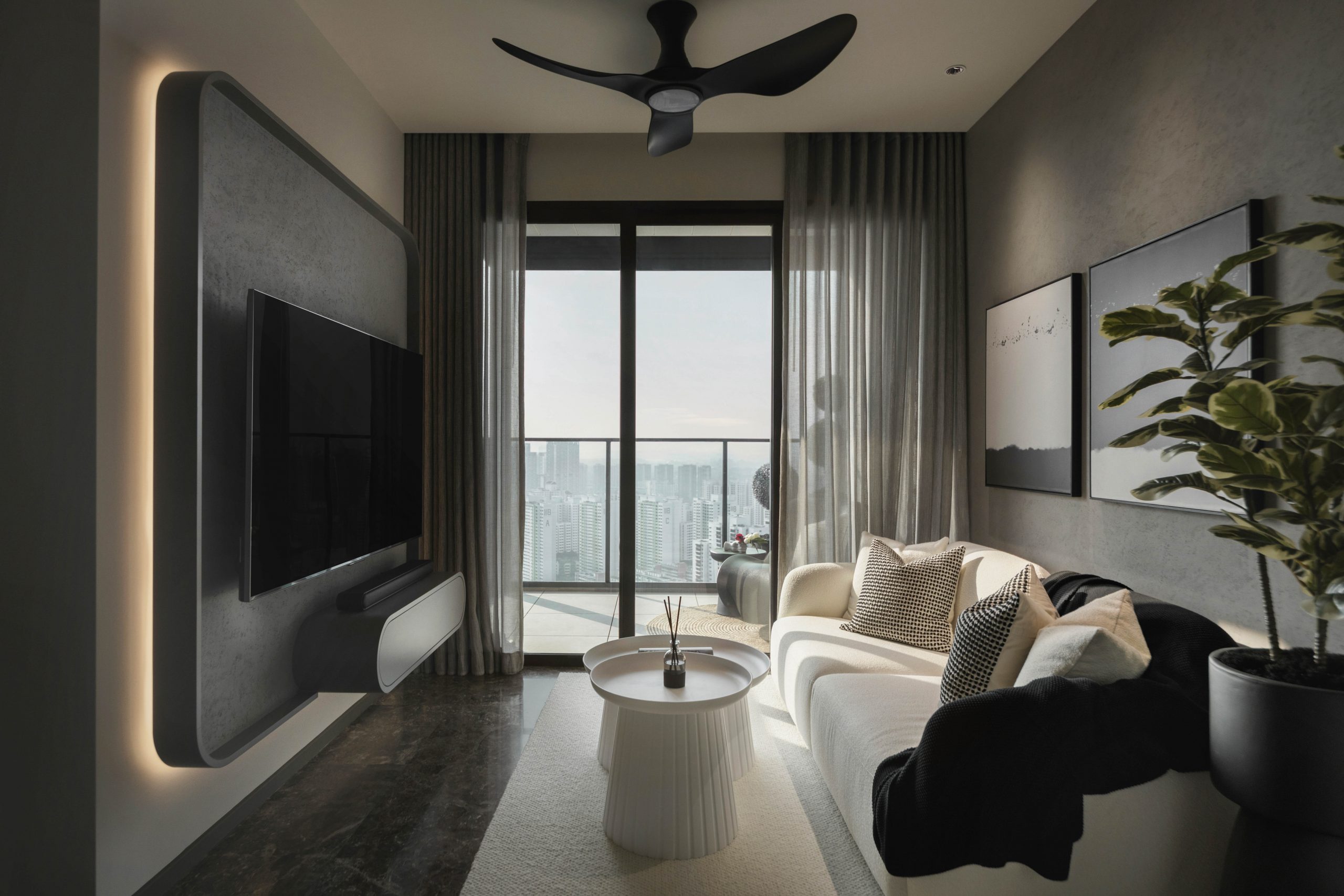
A great interior design will fall short without the right lighting to complement it. Whether it’s the light’s quality, positioning, or color temperature, an unsuitable setup can dull the environment’s aesthetic. However, if the lighting is meticulously strategized to perfectly accompany the design, your home will be revitalized. You need to have a vision of how you want your space to look at different times of the day, taking into consideration how both natural and artificial light will harmonize with the existing furnishings and colors in the room.
Here are 3 things you should know about lighting design before you start buying fixtures:
1. WHAT ARE THE 5 DIFFERENT TYPES OF LIGHTING?
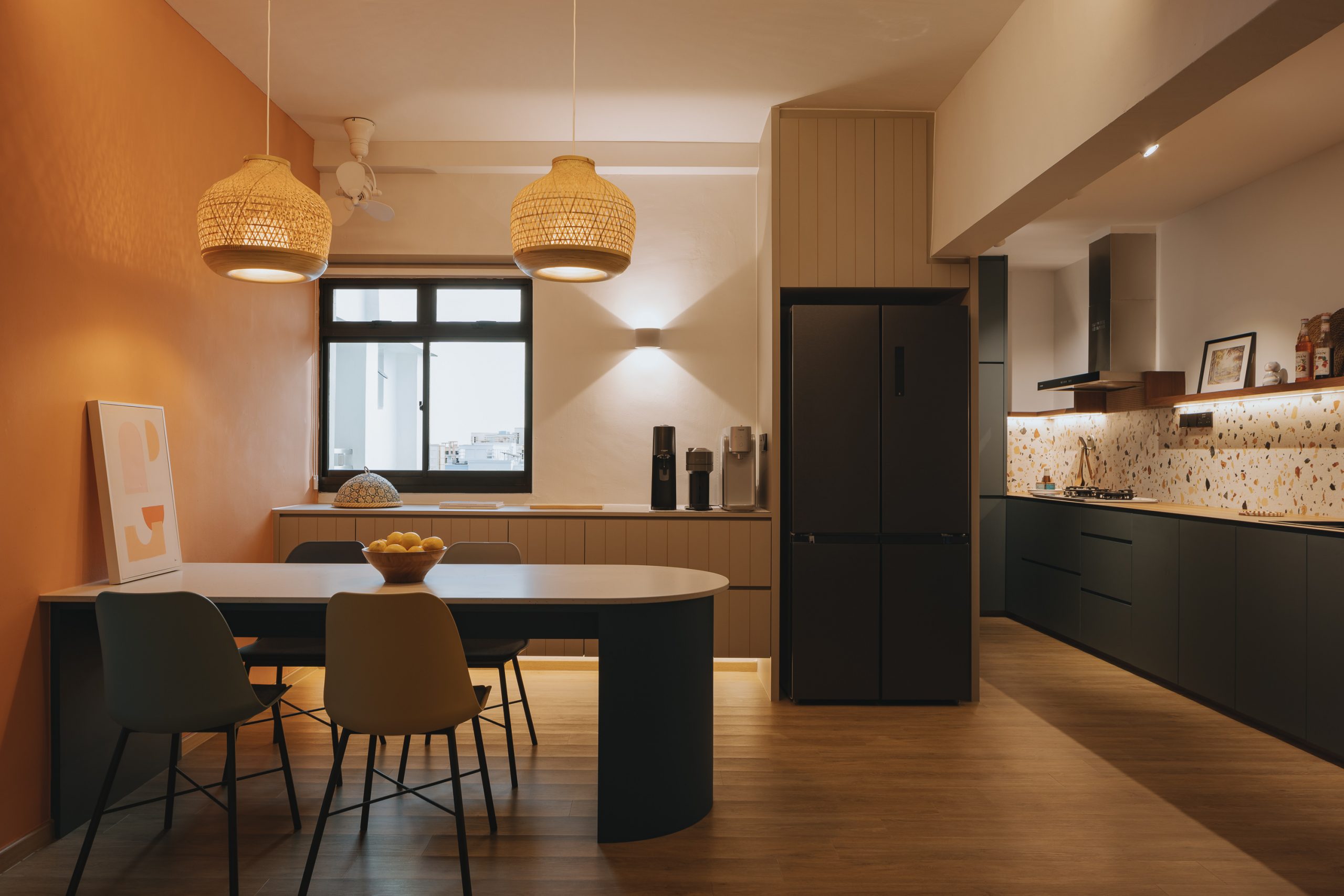
Featured Project: 658B Jurong West | Scandinavian Bohemian | The Interior Lab
Just like how there are different materials meant for different purposes, there are also different types of light for different uses. So before you start deciding, let’s go through them:
Ambient Lighting: Sets the tone as it provides the overall illumination of the space. This should be the base of any lighting plan.
Accent Lighting: When you have artworks or architectural features you’d want to highlight, this is the light you should use as its main objective is to draw attention.
Task Lighting: Emits abundant light for any type of tasks or activities such as reading or preparing meals.
Decorative Lighting: While the rest are meant for the purpose of producing light, decorative lighting is purely for artistic reasons. They are meant to be seen and displayed, adding style to the environment.
Natural Lighting: The only non-artificial light source: the sun. It is good to take note of just how much sunlight actually enters your home to determine where you need to have additional lighting.
2. WHAT IS LAYERED LIGHTING?
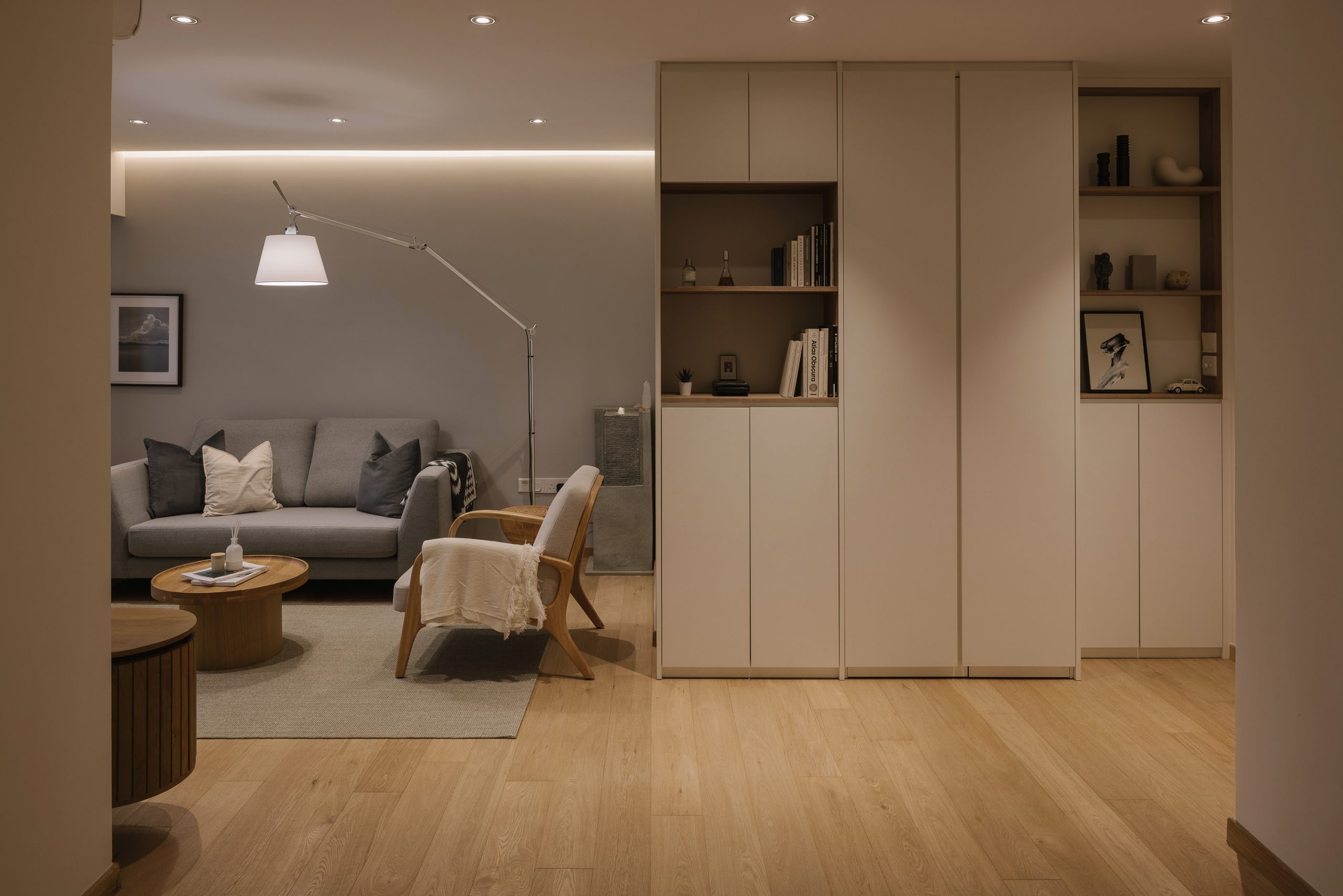
Featured Project: 113A Alkaff Crescent | Modern Scandinavian | The Interior Lab
Layered lighting is when you combine different types of lighting to achieve the desired effect. It enables you to have control over the mood of the room, as well as guide people’s attention to what you want to showcase. Having only 1 type of lighting may make the room seem stark and flat. Layering lights will fix exactly that because it adds depth and texture.
3. HOW TO LAYER YOUR LIGHTS?
Now that you know what the different types of lighting are out there and what layered lighting is, we can now start brain-storming for ideas. To begin, you need to know what kind of atmosphere you want the room to emanate. Do you want a bright and energized room or one that embraces the time after the sun has set? Or maybe even a setup that can do both; it all boils down to one’s personal taste. Either way, you need to have a variety of lighting types and sources in order to achieve an effective layering technique.

Featured Project: Waterfront Key | Organic Modern | The Interior Lab
Let’s use a living room setting as the first example: as this is a place for relaxing, we suggest using indirect and diffused lighting so that you’ll have a very soft ambiance mixed together with accent lighting that doubles as additional luminance and a guide for what you want your guests to focus on, such as paintings on the wall or ornaments you have on display. If you only have 1 main source of light, you will not be able to achieve such a cozy environment as it will lack depth and dimension. You can also add a task lighting, like maybe a floor lamp, for reading if you have a nook in place.
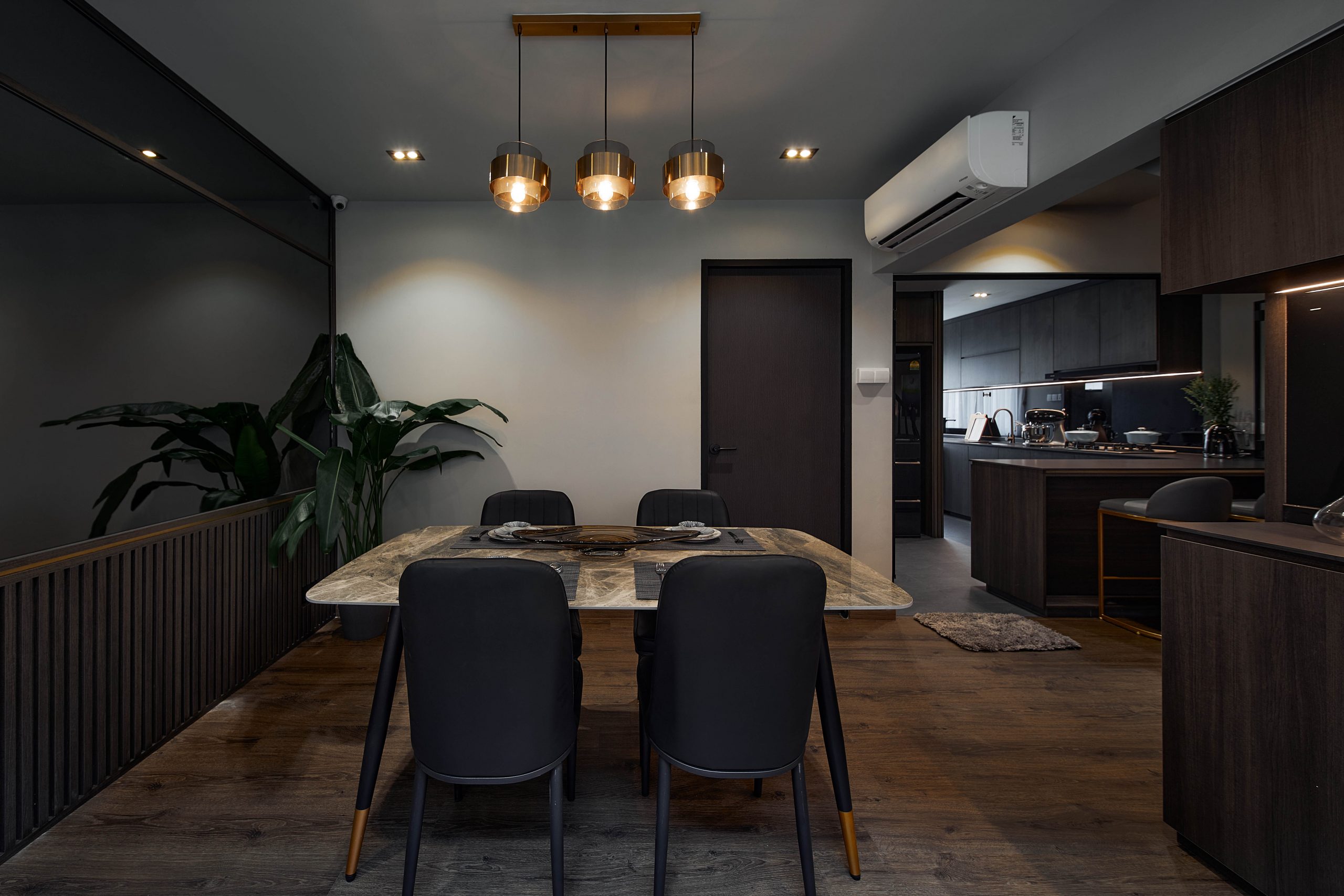
Featured Project: 261 Bishan | Modern Luxury | The Interior Lab
For dining rooms, the usual focal point would be the dining table itself so more often than not, it’s highly advised to have a pendant light (or a few) above the table with only smaller lights around the space. You may want to consider having the lights in this room dimmable so that you have control over the intensity of the light to manipulate the mood in turn. You might want to have the room brighter for when there are more people with a wide spread of food and in contrast, you might need a more intimate setting for a home-cooked dinner date!
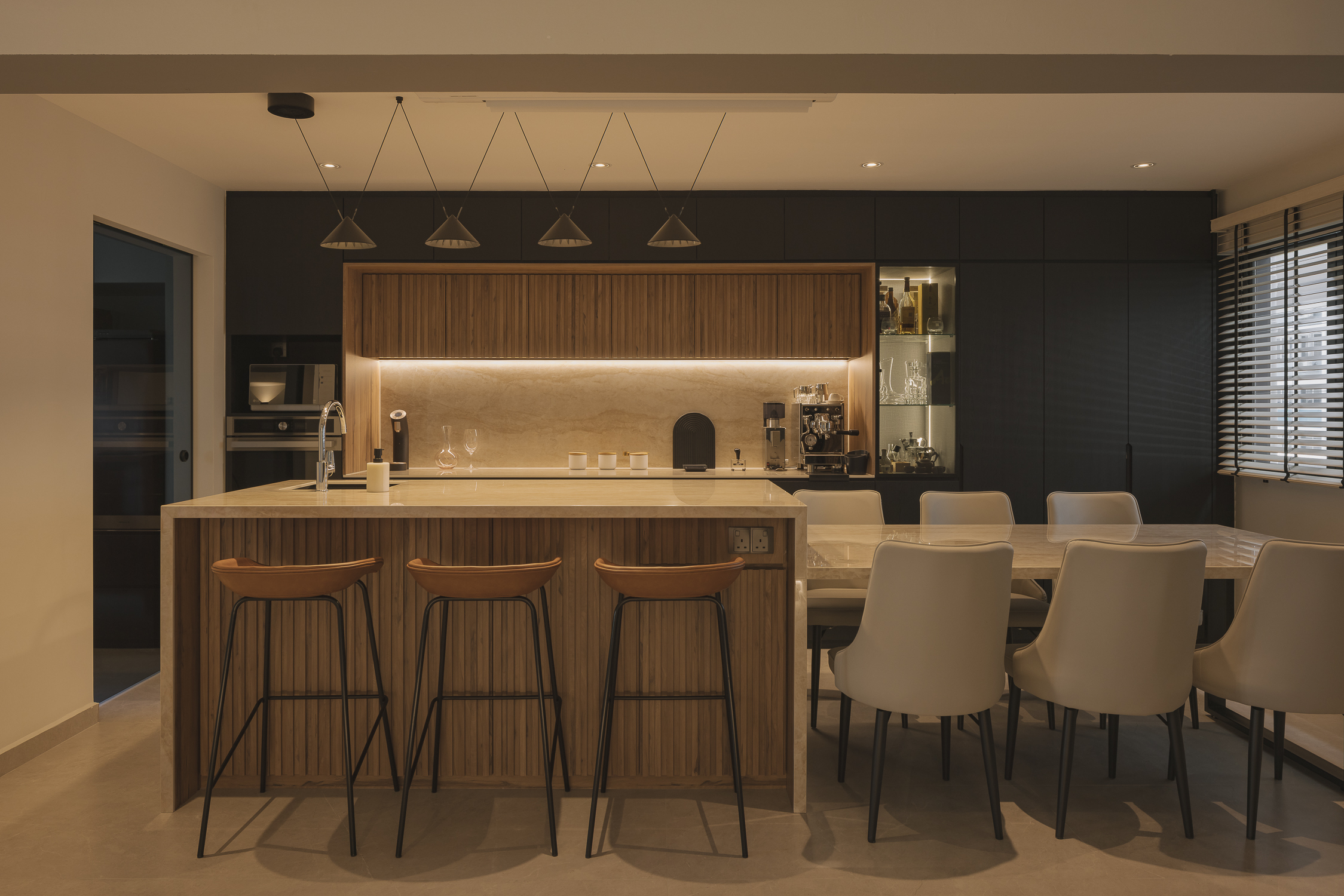
Featured Project: 857 Tampines | Modern Luxury & Scandinavian | The Interior Lab
When you’re cooking and you’re cutting up vegetables, you definitely need to be able to clearly see what you’re doing. That’s why for the kitchen, task lighting can be considered a necessity. People like to have LED strips installed under the upper cabinets so that the countertops are very well lit. Let’s say you have a galley type of kitchen and you only have lights in the middle of the room for general use, likely when you are using the countertops, your own shadow will cover what you’re doing since the only light source is behind you.
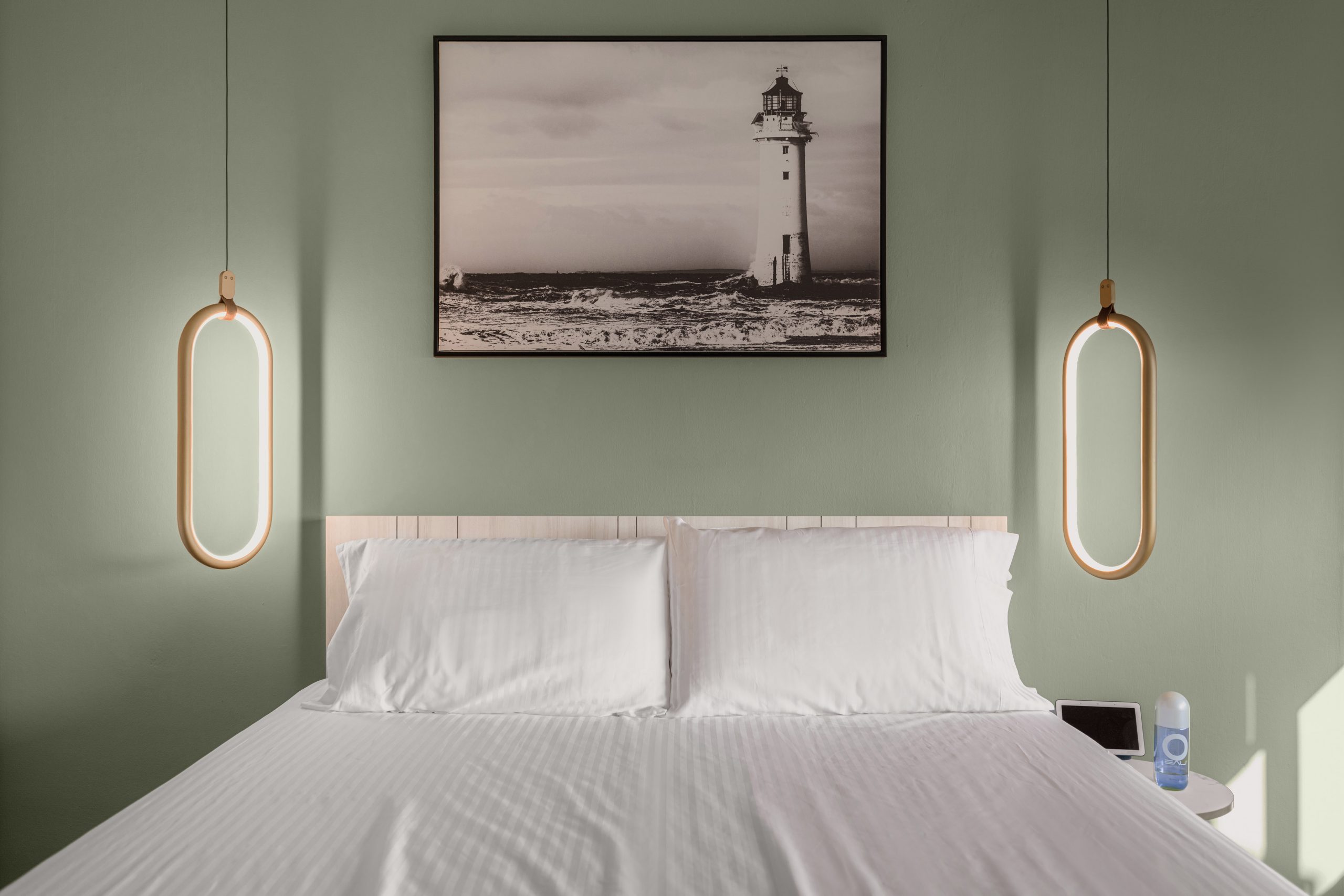
Featured Project: 394 Tampines | Modern Nordic | The Interior Lab
The bedroom is the part of the house where comfort is paramount because who doesn’t deserve a good night’s sleep?? Many people opt for a more minimal lighting design for their bedrooms to avoid disrupting their rest. Imagine trying to unwind in a room where the lights are too harsh or intense— it would be too uncomfortable. A common choice, which one would see very often, would be symmetrical decorative lighting because the visual balance is very pleasing to the eye. Consider having a lamp if you enjoy bedtime reading!
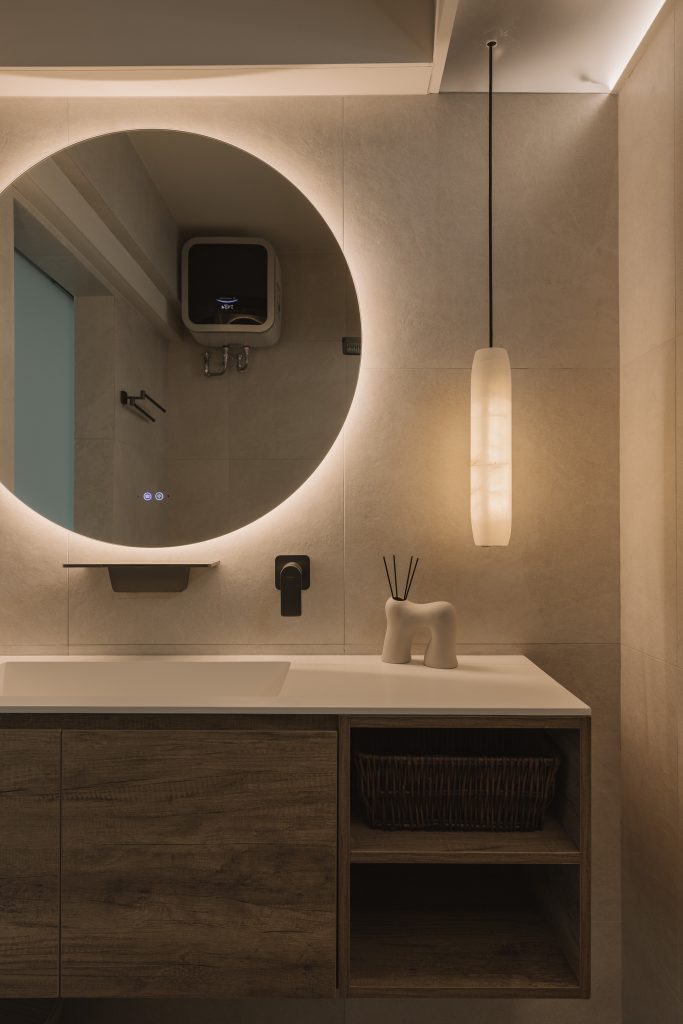
Featured Project: 9 Joo Seng Road | Wabi Sabi Minimalist | The Interior Lab
Lastly, we have the bathroom. Adequate task lighting is essential in this room because, without it, using the mirror would be challenging. On a daily basis, we rely on proper lighting to groom and perform personal care routines so if there is insufficient light, it will be hard to do these activities with precision. You need to be mindful of where you place your lights because if they are poorly positioned, it can create unwanted shadows complicating tasks like shaving or applying makeup. What we advise is to have a very balanced lighting around the mirror so that everything would be clear and easy to see. To do this, you use a mirror ring or wall-mounted lights on both sides of the mirror to get that even illumination on your face.
Once you’ve distinguished the look and mood you want to create, just take note of the 5 different types of lighting we have gone through: observe how the sun hits the room, decide what variety of lighting you need and plan how to layer them that would match with the interior design. Don’t hesitate to add in a decorative lighting if you find a statement lamp that you feel would boost the appeal of your home!
CONSULT OUR DESIGNER
-
23 October 2025 DESIGN INSPIRATIONTIPS & GUIDES
Why Layering Textures Is the Secret to a Cozy, Elevated Home
-
13 October 2025 TIPS & GUIDES
6 Lighting Tips for Interior Design in Modern Homes in Singapore
-
9 October 2025 TIPS & GUIDES
7 Space-Saving Hacks for Modern Small Condo Design in Singapore
-
9 October 2025 TIPS & GUIDES
How to Choose the Right Colour Palette for Your Renovation Interior Design
-
9 October 2025 TIPS & GUIDES
Transforming Small Bathrooms: Space-Saving Tips for Bathroom Renovation in Singapore
-
9 October 2025 DESIGN INSPIRATIONTIPS & GUIDES
First Impressions Count: How To Create A Welcoming Entryway

